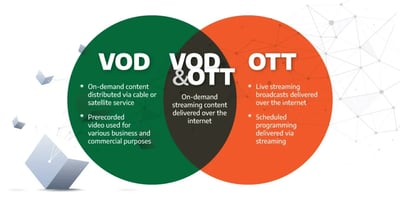In the ever-evolving digital landscape, the demand for seamless video streaming experiences has...
What is a video CDN? | CDN video streaming
Imagine you’re watching your favorite show online, and suddenly, it starts buffering. Annoying, right? Now picture a world where video content streams smoothly, regardless of the number of viewers or their location. Welcome to the realm of Content Distribution Networks (CDNs) designed specifically for video streaming.
The Evolution of Video Content Delivery
In the early days of the internet, videos were hosted on a single server. This approach worked fine as long as viewership was low. However, as the demand for online video content grew exponentially, this method revealed several limitations—bandwidth bottlenecks, latency issues, and severe server crashes during peak times.
Enter the Content Delivery Network (CDN). A CDN is a geographically distributed network of proxy servers that work together to deliver content to users more efficiently. When it comes to video CDN, the underlying principle remains the same but with a focus on video content, ensuring high-quality, uninterrupted streaming experiences.
How Does a Video CDN Work?
A video CDN works by caching video content in multiple locations worldwide, known as points of presence (PoPs). When a user requests to watch a video, the CDN routes the user to the nearest PoP to reduce latency and improve load times. Here’s a simplified process:
- Content Caching: Video files are stored in various PoPs around the world.
- Load Distribution: User requests are redirected to the nearest PoP, minimizing the distance traveled by the data.
- Dynamic Adjustment: CDNs can dynamically adjust in real-time, managing traffic loads and ensuring optimal delivery even during spikes in traffic.
Advantages of Using a Video CDN
1. Reduced Latency: By bringing content closer to the user, CDNs minimize the time data travels, reducing lag and buffering times.
2. Scalability: CDNs can effortlessly handle large volumes of traffic, ensuring a seamless user experience even during peak times.
3. Cost Efficiency: Distributing requests across multiple servers reduces strain on any single server, leading to lower bandwidth and infrastructure costs.
4. Enhanced Security: Advanced CDNs offer security features like DDoS mitigation and encryption, protecting video content from cyber threats.
BlazingCDN exemplifies these benefits by providing a robust, cost-effective CDN solution designed to enhance video delivery for businesses of all sizes.
CDN Video Streaming: A Game Changer
Video CDN has redefined how we consume video content over the internet. From Netflix to YouTube, major video streaming platforms leverage CDNs to provide high-quality, uninterrupted viewing experiences. But what goes on behind the scenes?
Adaptive Bitrate Streaming: This technique dynamically adjusts the video quality based on the viewer's internet connection, ensuring minimal buffering. It works seamlessly with CDNs to provide the best possible experience on various devices.
Edge Computing: Modern CDNs are starting to incorporate edge computing, allowing for processing closer to the data source. This not only accelerates delivery times but also optimizes the performance of interactive video content.
Choosing the Right Video CDN Provider
Not all CDNs are created equal, especially when it comes to video streaming. Here are some factors to consider when choosing a video CDN provider:
- Global Reach: Ensure the CDN has PoPs in regions where your audience is located.
- Performance: Look for low latency, high throughput, and adaptive bitrate support.
- Security: Features like DDoS protection, SSL encryption, and secure token authentication are crucial.
- Scalability: The CDN should handle high traffic volumes seamlessly.
- Cost: Transparent pricing models tailored to your use case.
BlazingCDN, for instance, offers a comprehensive suite of features tailored for media, software, and game companies, providing an optimal balance of performance and cost-efficiency.
Real-World Examples of Video CDN Use
1. Netflix: A pioneer in leveraging CDNs for streaming, Netflix uses its proprietary CDN, Open Connect, to deliver high-quality video content globally.
2. YouTube: Google’s video platform relies on various CDNs to ensure instant access to millions of videos daily.
3. News Broadcasters: Major news networks use CDNs to live-stream events globally, ensuring real-time access with minimal lag.
The Future of Video CDN
The landscape of video CDN is rapidly evolving. As technologies such as 5G, virtual reality, and augmented reality become more prevalent, the demand for robust video CDN solutions will only grow. These advancements will necessitate even lower latency and higher bandwidth capacities, pushing the boundaries of what CDNs are currently capable of.
Additionally, the integration of AI and machine learning into CDN infrastructures will enable predictive content delivery, further enhancing user experiences by anticipating and preloading content based on viewing habits.
Take the Next Step
As video content continues to dominate internet traffic, adopting a powerful video CDN solution is no longer optional—it’s essential. To explore how you can leverage a cutting-edge video CDN to boost your streaming quality and user satisfaction, check out BlazingCDN’s products or contact us for a tailored solution.
In the rapidly advancing digital world, staying ahead of the curve in video streaming can make all the difference. Whether you’re a media company, a software provider, or a game developer, a reliable video CDN will be your cornerstone for delivering compelling, high-quality content to your audience.


